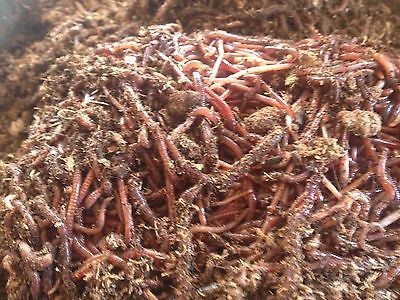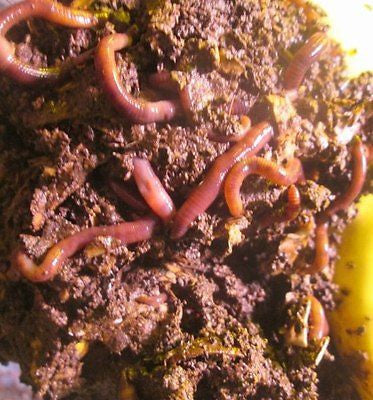Great red worms: Why they matter for gardens
Great red worms: Why they matter for gardens
Blog Article
Everything You Required to Understand About Red Wigglers for Composting
Red wigglers, or Eisenia fetida, play a critical function in the world of composting, changing natural waste into beneficial dirt modifications. Their distinct biological attributes allow them to prosper in various conditions, making them an ideal selection for both amateur and knowledgeable composters alike. Comprehending their requirements and advantages is vital for developing an effective vermicomposting system. The procedure of setting up a worm container and maintaining it can position obstacles. To successfully harness the possibility of these worms, one should check out the complexities of their treatment and monitoring.
What Are Red Wigglers?

(red wiggler worms)
Belonging To North America, red wigglers are surface-dwelling organisms that favor wet, cozy habitats abundant in disintegrating raw material. Their diet plan consists mostly of decaying plant product, food scraps, and various other organic particles, which they take in and break down efficiently. As they absorb this material, they generate nutrient-rich spreadings that enhance soil fertility.
Red wigglers are hermaphroditic, having both male and women reproductive organs, and can reproduce quickly under optimum conditions. Generally, red wigglers are important contributors to the procedure of recycling natural waste right into valuable garden compost.
Benefits of Using Red Wigglers
Using red wigglers in composting systems supplies various benefits that boost both the effectiveness of waste administration and the high quality of the resulting compost. These worms, medically understood as Eisenia fetida, are particularly efficient at damaging down natural issue, transforming cooking area scraps and yard waste right into nutrient-rich garden compost at an accelerated rate.
One of the primary advantages of making use of red wigglers is their capability to eat huge amounts of natural product, usually processing their weight in food waste daily. This high usage price leads to much faster decomposition and minimizes the volume of waste sent out to land fills. In addition, the castings created by red wigglers are rich in crucial nutrients, useful bacteria, and enzymes, making them a superb fertilizer for yards and plants.
Furthermore, red wigglers prosper in a variety of atmospheres, making them adaptable for both indoor and outside composting systems - red wigglers. Their existence in a compost bin aids to aerate the product, avoiding smells and advertising a healthy and balanced composting process. On the whole, using red wigglers not just contributes to efficient waste management yet likewise sustains sustainable gardening practices with the manufacturing of high-quality garden compost
(Worm Farms Near Me)
Setting Up Your Worm Container
To efficiently establish a worm bin, it is important to choose an ideal container that fulfills the needs of red wigglers while providing a helpful environment for composting. An appropriate bin can be made from plastic, wood, or metal, with an ability of a minimum of 1 square foot for every single extra pound of worms.
Ensure the container has sufficient drain holes to avoid excess dampness, as red wigglers grow in a damp, but not waterlogged, environment. red wigglers. The bin should also be ventilated to provide sufficient airflow, avoiding anaerobic conditions that could harm the worms
An ideal location for the worm container is a cool, dark area, totally free from straight sunshine and extreme temperatures, as red wigglers favor a temperature level range of 55 to 77 degrees Fahrenheit.
Before introducing the worms, prepare bed linens products such as shredded paper, cardboard, or coconut coir, which will offer both habitat and food. Moisten the bed linens gently to produce a welcoming environment for the worms. Lastly, take into consideration positioning a lid on the bin to maintain moisture and minimize insects, while guaranteeing it can be easily gotten rid of for upkeep.
Feeding and Care Guidelines
Feeding red wigglers is a crucial facet of preserving a healthy composting system. These worms grow on a diverse diet regimen, mostly composed of natural materials such as vegetables and fruit scraps, coffee grounds, and smashed eggshells. It is important to avoid feeding them meat, milk, and oily foods, as these can produce undesirable smells and draw in parasites.
When presenting food to your worm container, cut or shred materials right into smaller items to help with quicker decomposition. Begin with small quantities to gauge the worms' usage rate, progressively enhancing the amount as they adjust. It is suggested to alternating feeding places within the container to motivate comprehensive mixing and oygenation of the compost.

Troubleshooting Common Issues
Keeping a growing worm composting system can occasionally offer obstacles that need interest and troubleshooting. Typical issues consist of an undesirable smell, which typically view it suggests overfeeding or the presence of anaerobic problems. To treat this, minimize the quantity of food added and ensure proper oygenation by mixing the bedding product.
An additional regular problem is the escape of worms from the container. This can happen due to too much wetness or inappropriate environmental problems. On a regular basis inspect the moisture degrees, aiming for a damp yet not soggy uniformity, and preserve optimal temperature levels between 60-80 ° F(15-27 ° C )to develop a comfortable environment for your red wigglers.
Bugs, such as fruit flies, can also attack worm bins. red wigglers. To battle this, cover food scraps with a layer of bed linen or shredded paper to deter flies from laying eggs. In addition, guarantee that any kind of food added is fresh and devoid of mold and mildew, which can attract undesirable pests
Last but not least, if your worms seem non-active, check for anxiety elements such as temperature level fluctuations or insufficient moisture. Attending to these common problems will certainly assist keep a healthy and efficient worm composting system.
Conclusion
In recap, red wigglers, or Eisenia fetida, play an essential role in sustainable waste management through vermicomposting. Proper configuration and upkeep of a worm bin, along with adherence to feeding standards, make sure a growing ecological community that minimizes landfill contributions.
Report this page